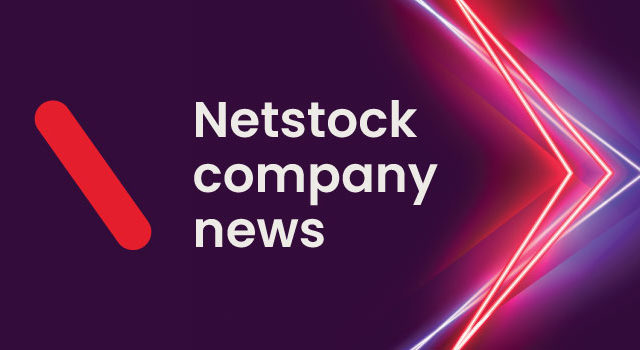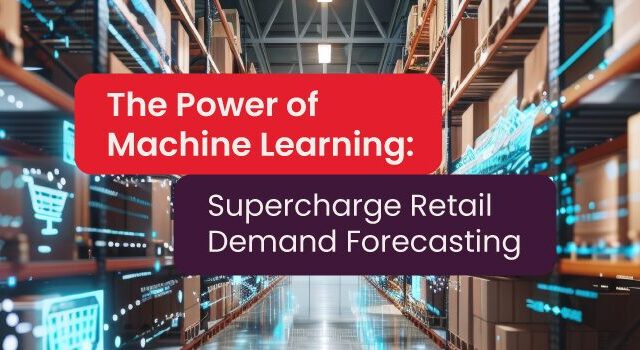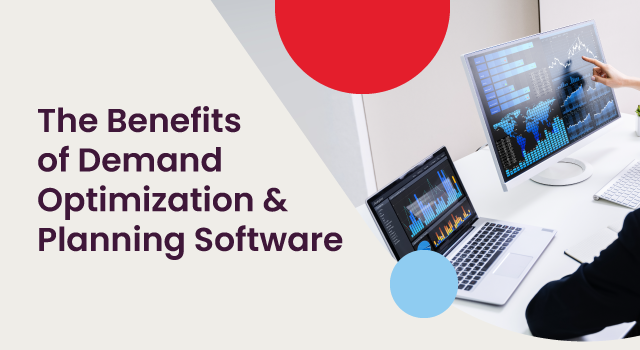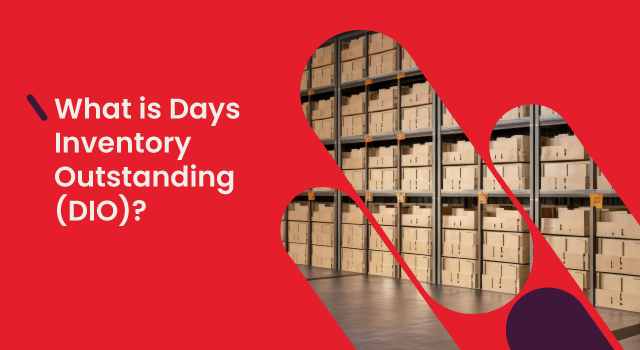Retail demand forecasting is notoriously difficult to get right, yet so much of what we do depends on it. The problem with traditional forecasting is that historical data doesn’t reveal the full picture. Consumer preferences change, and market demand is far from static. Then, there are external factors, like weather, economic conditions, and social media influence.
Inaccurate forecasting can have a devastating effect on business. You probably have excess stocks and obsolescence. Demand surges and supply problems may be unexpected, resulting in stock-outs and unhappy customers. Inaccurate forecasts disrupt the entire supply chain and hinder effective resource allocation.
If only the forecasts were more accurate, your business could enjoy improved customer service, lower stocks, and increased profits. That’s where machine learning (ML) functionality steps in and can help you achieve these goals. Machine learning enhances the quality and quantity of your data and provides highly accurate and flexible forecasts, offering benefits like improved operational orders, and the ability to predict future outcomes of events and promotions, to name a few. Using real-time data to communicate with suppliers will help you understand the true benefits of AI-driven software systems.
With machine learning capability, here’s what you can expect:
Understanding the essentials of retail demand forecasting
Demand forecasting in the retail world is always a challenge. In the past, demand planners had to depend on historical data to forecast future demand. AI-powered machine learning can analyze vast amounts of data from various sources to deliver accurate and dynamic retail demand forecasts. This allows you to generate highly accurate forecasts and adapt quickly to changing market conditions.
What is machine learning?
At its core, Machine Learning is a subset of artificial intelligence (AI) focused on crafting algorithms and statistical models. These enable machines to learn from data, make decisions, and detect even the subtlest changes or patterns that might escape human analysis. Machine learning functionality possesses the capabilities to process vast amounts of data beyond human capacity, while these algorithms can factor in numerous variables such as economic trends, social media sentiment, and competitor activity.
The accuracy of ML forecasts substantially reduces the risk of stock-outs and enables stock reductions. Management can react quickly to adjust forecasts and replenish inventory to cover demand surges. They can also manage excess stock by cutting back on orders when the forecast shows a drop in sales.
The role of machine learning in demand forecasting
Machine Learning follows instructions in algorithms to analyze data and learn from it. The more relevant the data, the better the technology becomes at making predictions and identifying patterns. AI removes the need for manual calculations and human intervention. It simplifies forecasting and releases employees to continue with other more important work.
Machine Learning removes bias. Where people may be tempted to use intuition, machines use objective data analysis. This technology can combine data from external sources, including historic sales, real-time current sales, customer behavior, economic variables, social media activity, and weather. It uses all this information to create a picture of factors influencing demand. The result is a more accurate forecast.
Machine learning systems must be trained. For this, they need feature engineering. This is a process of transforming the data into a format that the machine can use and understand. The process includes the following:
- Data selection: This process involves identifying the information most likely to influence demand.
- Data transformation: Raw data must be clean and accurate. The machine needs consistent formatting. Dates, for example, must all follow the same pattern.
Retail forecasting machine learning helps you make better decisions. It gives you a better understanding of market trends and consumer behavior. With this knowledge, you can reduce inventory, enhance customer satisfaction, and improve business performance.
“In the apparel industry, one pair of pants may have 200-250 available sizes when looking at all waist and inseam options. We use the statistical models and algorithms that Netstock suggests at the product level and then apply historical averages to develop forecasts down to the SKU level” – Demand Planning Manager at Edwards Garment
Benefits of machine learning for retail demand forecasting
Machine learning prediction in retail brings several benefits to your business, including:
Increased accuracy
Machine learning functionality takes demand forecasting to new levels of accuracy. Now, you don’t have to rely on averages and basic trends.
ML can uncover hidden patterns and subtle tendencies. It can recognize patterns influenced by holidays or even competitor promotions and analyze complex relationships with external factors, resulting in a more accurate forecast.
With a clear picture of what demand will look like in the future, you can cut back on stock. You’ll have the confidence of knowing that you won’t run out of stock and let your customers down.
Efficiency and scalability
With machine learning, retail demand management systems quickly churn through vast amounts of data. The systems use this data to deliver real-time forecast updates. Dynamic forecast changes ensure that the data remains accurate and enable a quick response from supply chain players, reducing lead times.
Retail demand planning with machine learning functionality analyzes the following data for more accurate forecasting.
- Sales history: Past sales can predict future retail demand.
- Real-time data: Point-of-sales data is combined with data from external sources like social media.
- External drivers: This data may include competitor actions, social media information, and economic conditions.
Adaptability
Retail demand management is complex. The retail environment is in a constant state of flux, subject to fast-moving market trends. Traditional forecasting battled to keep pace with these changes. Large volumes of data made retail demand forecasting time-consuming and cumbersome. With no other options, sales forecasters used historical data, but demand isn’t static.
Machine learning functionality has changed that. These systems constantly learn and adapt to changing market circumstances. If these models come across conflicting data, they adjust their assumptions to continuously improve forecasts.
“Netstock helped us to respond with precision to the growing importance of Amazon’s marketplace. We were able to make improvements in the way we planned for that channel in the first week. We were amazed at the flexibility and depth of the analysis that we were able to perform. We can easily select the customers that we want to forecast individually. Previously, these types of changes would have required IT prioritization and took much longer to complete. Now, we can add new key customers or channels in no time flat, experiment with alternative hierarchies and roll-ups, and formulate new insights, all without consuming valuable IT resources” – Sr. Manager of Supply Chain, at Shimano
Implementing machine learning in retail demand forecasting
Once you have decided to embrace the improvements that machine learning software can bring, it’s time to choose the most appropriate solution for your business.
Here are some tips on what to look for:
- Data integration: The solution must integrate with your demand forecasting data sources. Integrated data sources include:
- Sales history
- Point-of-sale data: for real-time data input
- Inventory data
- Customer behavior data
- External data sources
- Machine learning requirements: Your machine learning facility should include the following:
- Advanced algorithms: Look for machine learning algorithms capable of finding data patterns and relationships.
- Flexibility: Look for a platform that allows some level of customization. Every business is different, so you need a system you can tailor to your needs.
- Easy to use: An easy-to-use interface facilitates training. Make sure that the system you choose also offers clear reports and charts. Netstock software includes pre-configured dashboards and reports that are a pleasure to use.
- Scalable: Don’t outgrow your machine-learning solution. You need a system that adapts to your growing business needs.
- Additional features:
- Scenario planning: Scenario planning is very useful for understanding the impact of various situations. These may include supply disruptions, economic events, competitor actions and more.
- Collaboration tools: Enable interdepartmental cooperation and destroy silos.
- Reputation: The software supplier you choose should have a track record and knowledge of your industry.
- Customer service: Choose a software supplier with a history of successfully implementing machine learning solutions. Your chosen software provider should also offer ongoing customer support well after your system is in place.
Future of machine learning in retail demand forecasting
Machine learning is still relatively new. In the future, you can expect increasingly more advanced algorithms. These will take demand forecasting in retailing to higher levels of sophistication. As ML algorithms get continuously more accurate, this ensures more reliable and flexible forecasting with fewer stock-outs.
Advanced ML models, like Netstock’s ML-driven demand planning solution, include real-time data, enabling ongoing flexible forecast adjustments to reflect the latest market dynamics.
With Netstock’s machine learning capability, you can:
- Create dynamic forecasts by product, group, sales channel, and key customers.
- You can plan on multiple dimensions to generate product and channel-specific forecasts weekly or daily
- Work in any unit of measure, aligning your budgeting with financial forecasting
- With the ML events capability, you can teach the ML model where ad hoc events have happened in the past and indicate where they’ll be happening again. The ML event functionality will then automatically calculate the impact of the event and adjust your forecast accordingly
Today, accurate and responsive demand forecasting is a business necessity. It’s the only way to effectively reduce inventory while improving customer service and staying one step ahead of your competition.




